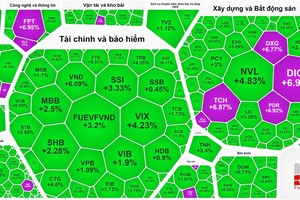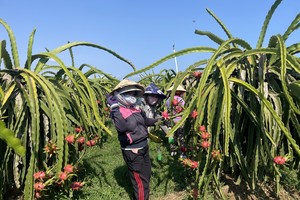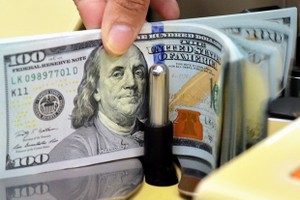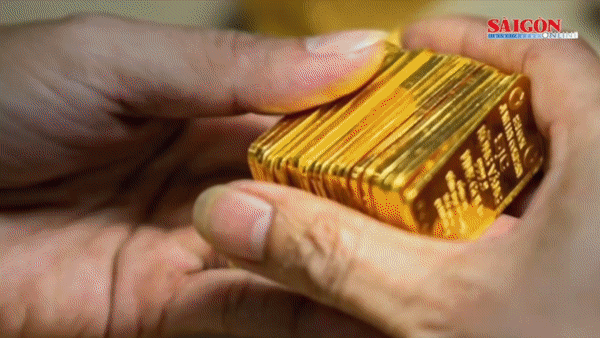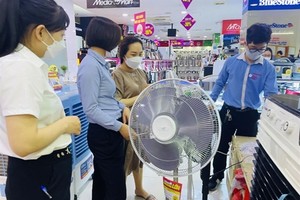 Ba Chieu Market in Binh Thanh District merely operates at 30 percent capacity. (Photo: SGGP)
Ba Chieu Market in Binh Thanh District merely operates at 30 percent capacity. (Photo: SGGP)
The Department of Industry and Trade of Ho Chi Minh City said that by 10 a.m. on October 30, 140 out of 234 traditional markets have resumed operations in the area; 94 out of 234 traditional markets have remained temporarily closed.
Localities have now closed all markets in District 7 and Nha Be District. The markets have mainly reopened stalls selling food and foodstuffs.
It is expected that from October 31 to November 5, the city will reopen 15 more markets.
Thus, after nearly one month of reopening in the new normal state, more than 50 percent of traditional markets in the city have returned to operation. Although markets are allowed to operate at 50 percent capacity at first, then gradually increase capacity, depending on the situation of pandemic control, due to weak purchasing power, most of them are still operating below the allowed threshold.
For instance, although Ba Chieu Market in Binh Thanh District is allowed to operate throughout the peak days of social distancing, the market has only reached 30 percent of its capacity so far, out of a total of 1,300 stalls.
“The number of small traders registering to sell again sometimes rose to 40 percent, but then fell off gradually due to weak purchasing power, damaged goods, and losses. As a result, small traders closed their stalls. Besides the fact that people are cutting spending due to economic difficulties, the market strictly applies the set of safety criteria for pandemic prevention, causing customers to be reluctant and uncomfortable when going shopping at the market," said Mr. Huynh Thanh Truong, Head of the Management Board of Ba Chieu Market.
In Thu Duc City alone, it is expected that from October 30, all markets in the area will reopen. Before reopening, markets must have a plan for safe pandemic prevention and control appraised by competent authorities and comply with the operating conditions. For instance, small traders and customers must have at least one Covid-19 injection for at least 14 days or have recovered from the disease within the last six months and have a QR code of the VNEID or Y Te HCM (HCMC Health) applications. Besides, markets must have a separate entrance and exit to avoid congestion. There must be partitions between stalls, between sellers and customers. They must ensure distance and control the number of people entering and exiting the market.
Among the three wholesale markets, Hoc Mon Wholesale Market officially reopened from October 20 at 50 percent capacity, equivalent to more than 200 stalls. Up to now, the market has received about 500-600 tons of goods per day, out of a total capacity of 2,500-2,700 tons per day.
Localities have now closed all markets in District 7 and Nha Be District. The markets have mainly reopened stalls selling food and foodstuffs.
It is expected that from October 31 to November 5, the city will reopen 15 more markets.
Thus, after nearly one month of reopening in the new normal state, more than 50 percent of traditional markets in the city have returned to operation. Although markets are allowed to operate at 50 percent capacity at first, then gradually increase capacity, depending on the situation of pandemic control, due to weak purchasing power, most of them are still operating below the allowed threshold.
For instance, although Ba Chieu Market in Binh Thanh District is allowed to operate throughout the peak days of social distancing, the market has only reached 30 percent of its capacity so far, out of a total of 1,300 stalls.
“The number of small traders registering to sell again sometimes rose to 40 percent, but then fell off gradually due to weak purchasing power, damaged goods, and losses. As a result, small traders closed their stalls. Besides the fact that people are cutting spending due to economic difficulties, the market strictly applies the set of safety criteria for pandemic prevention, causing customers to be reluctant and uncomfortable when going shopping at the market," said Mr. Huynh Thanh Truong, Head of the Management Board of Ba Chieu Market.
In Thu Duc City alone, it is expected that from October 30, all markets in the area will reopen. Before reopening, markets must have a plan for safe pandemic prevention and control appraised by competent authorities and comply with the operating conditions. For instance, small traders and customers must have at least one Covid-19 injection for at least 14 days or have recovered from the disease within the last six months and have a QR code of the VNEID or Y Te HCM (HCMC Health) applications. Besides, markets must have a separate entrance and exit to avoid congestion. There must be partitions between stalls, between sellers and customers. They must ensure distance and control the number of people entering and exiting the market.
Among the three wholesale markets, Hoc Mon Wholesale Market officially reopened from October 20 at 50 percent capacity, equivalent to more than 200 stalls. Up to now, the market has received about 500-600 tons of goods per day, out of a total capacity of 2,500-2,700 tons per day.
 Trade activities are vibrant at spontaneous markets outside Binh Dien Wholesale Market. (Photo: SGGP)
Trade activities are vibrant at spontaneous markets outside Binh Dien Wholesale Market. (Photo: SGGP)
Although the supply of goods has been increasing, strangely, traders have to move out of the market to be able to sell their goods. The reason is that more and more spontaneous markets mushroom around the market areas and buyers are reluctant to go inside the market because of strict Covid-19 prevention and control regulations. Thu Duc and Binh Dien wholesale markets also experience the same situation. According to the approved plan, Binh Dien Wholesale Market will resume operation at about 30 percent of capacity, equivalent to 600 traders, participating in trade activities with all categories of goods at the covered markets from November 1. Thu Duc Wholesale Market has also submitted a plan to reopen at 50 percent capacity with all three covered markets. The HCMC Department of Industry and Trade also said that 100 percent of supermarkets and convenience stores had resumed operations so far.
 Supermarkets run many promotional campaigns to stimulate demand. (Photo: SGGP)
Supermarkets run many promotional campaigns to stimulate demand. (Photo: SGGP)
At supermarkets, the supply of goods is quite abundant, and prices have cooled down, with many items being discounted sharply. For example, the MM Mega Market offers discounts of up to 50 percent on many homewares and 10-20 percent on agricultural products. Several supermarkets have launched many promotion programs to stimulate demand. However, the purchasing power remains weak, dropping by 30 percent, depending on the place. In general, people mostly focus on buying essential foods. As for non-essential items, despite deep discounts, it is difficult for supermarkets to sell them. It is expected that the situation will only get better when eateries are allowed to resume operations, and people have improved their incomes after a long social distancing.

